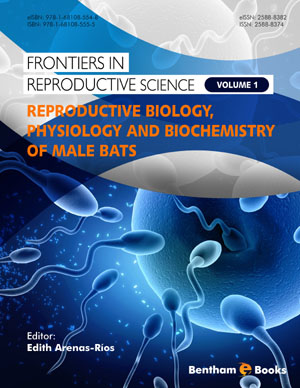Abstract
In the species of bats that present a asynchronous reproductive pattern (Corynorhinus mexicanus), spermatogenesis is in recess during autumn and winter, when androgen levels are low, but the secondary sexual functions are maintained and mating takes place. The proliferation of spermatogonia and the spontaneous degeneration of spermatocytes often coincide during normal testicular functioning in mammals, and this is where apoptosis plays a central role in controlling the number of testicular germ cells. The spermatogonia are the cells that frequently suffer apoptosis in the testicles, but this process can also affect spermatocytes and spermatids. This emphasizes the need to improve our understanding of the participation of apoptosis and, therefore, its modulation during testicular development and training of new blood vessels. The strict regulation of angiogenesis and its adequate functioning are very important for organisms, since both the excessive formation and the insufficient development of blood vessels can cause severe diseases. Studies of the formation and involution of testicular blood vessels in seasonal reproductive bat species may thus shed new light on understanding the control and development of angiogenesis in mammals. Using the C. mexicanus bat as a study model of the seasonal activity of the testicle, we determine for the first time the involvement of the apoptosis in developing testicular vasculature in a seasonal chiropteran with drastic morphological changes of the testes, although more comparative studies are needed, mainly one between the different stages of testicular cycle which can provide information of the existence of angiogenesis associated with the testicular cycle in these species.
Keywords: Apoptosis, Bats, Blood vessels, Seasonal reproduction, Testicles.






















